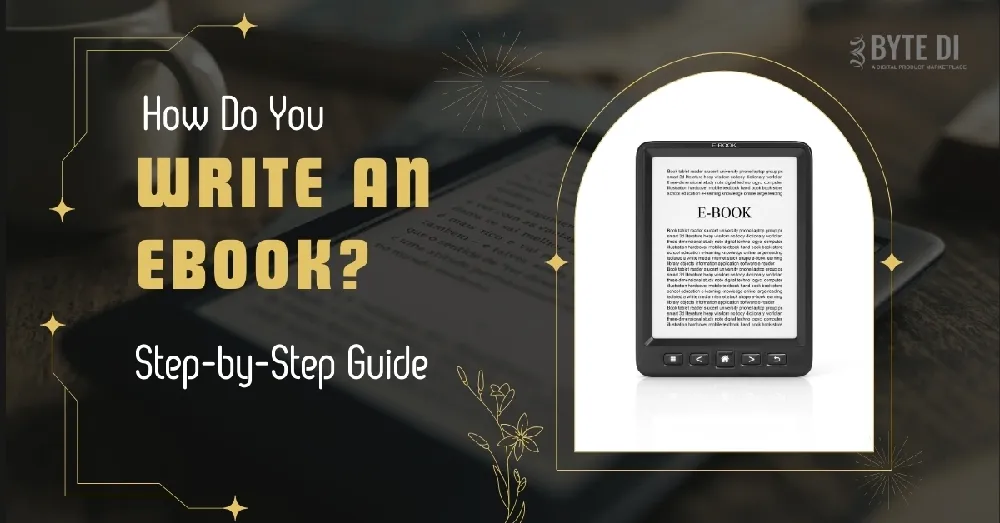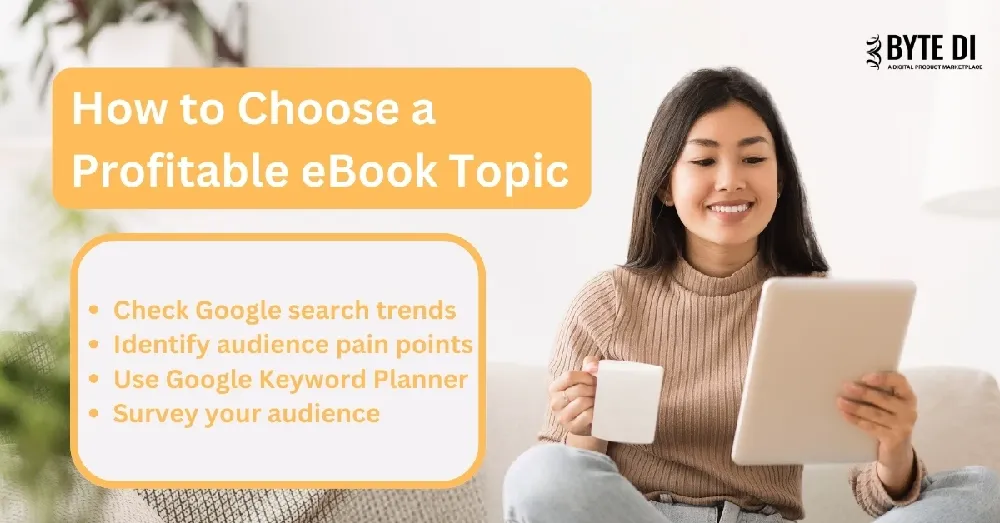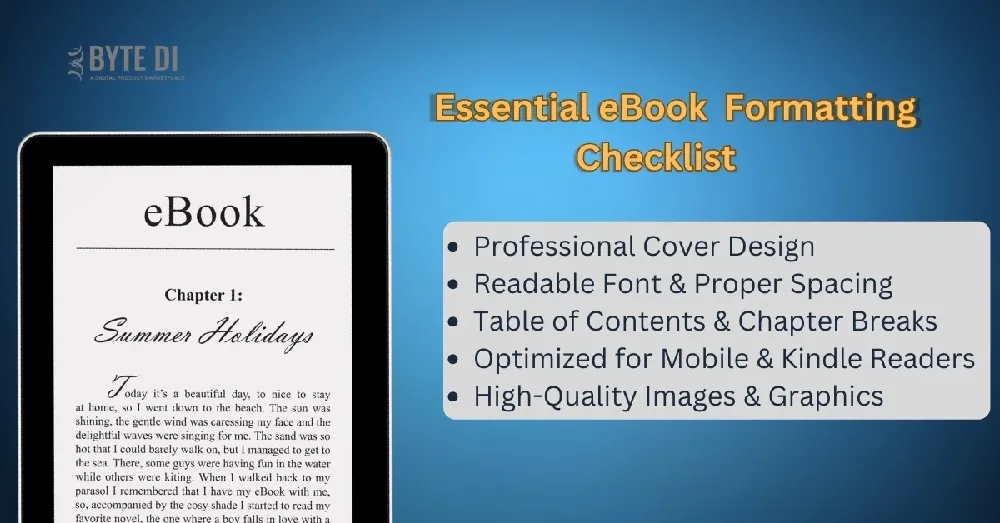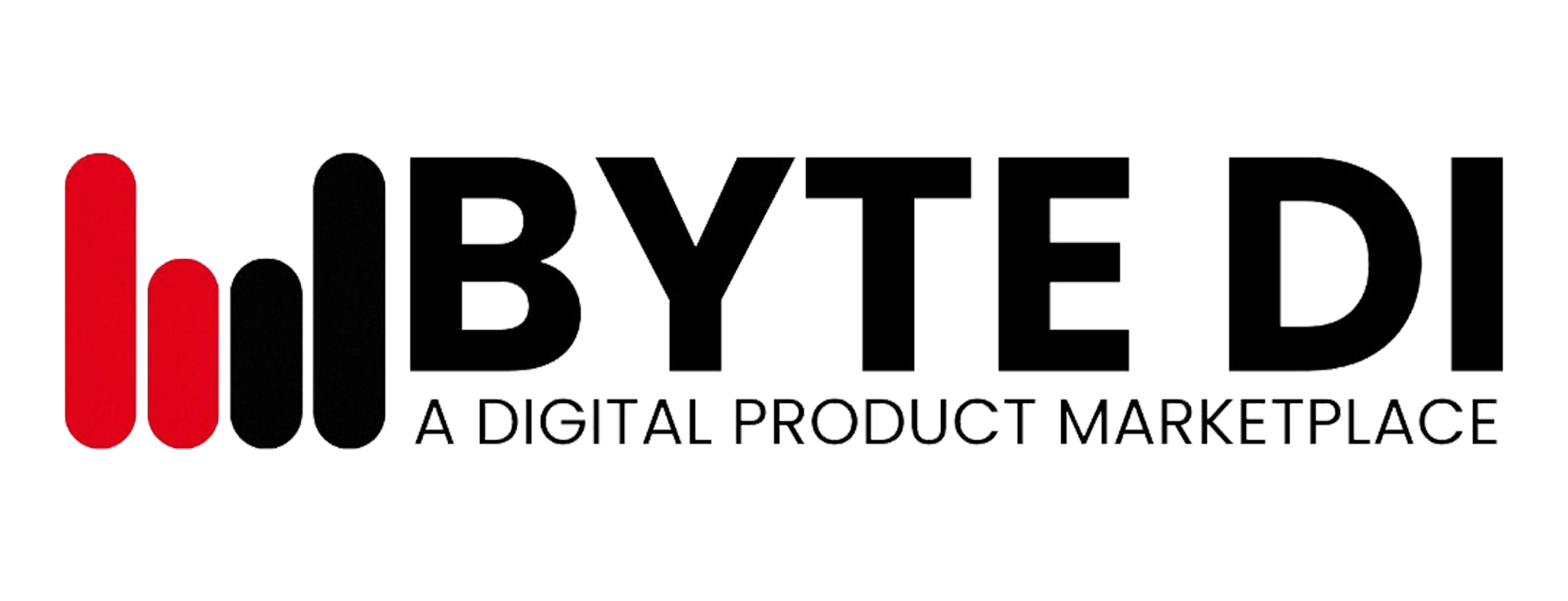How Do You Write an eBook? A Step-by-Step Guide to Create & Sell Your eBook Successfully

eBooks have revolutionized the way we consume content, providing a convenient and cost-effective way to learn, entertain, and explore new ideas. Whether you're an aspiring writer, entrepreneur, educator, or industry expert, writing an eBook can help you build authority, generate passive income, and reach a global audience.
This guide provides step-by-step instructions that explain what it takes to write an eBook, starting from deciding your subject through publishing it for sale.
Why Should You Write an eBook?
Writing an eBook provides several strong benefits that should encourage anyone who doubts about the decision.
- An eBook generates automatic earnings after its publication date and needs no ongoing work to function.
- Brand Authority – Establish yourself as an expert in your niche or industry.
- There are two key benefits to eBooks when compared to print books, such as no printing or shipping expenses and maximum return on investment.
- Your eBook can be purchased by people from everywhere in the world since it has global reach potential and can attract millions of potential customers.
- An eBook functions as an instrument to both accumulate email addresses and draw future business clientele.
The following section details the systematic approach for creating and publishing must-have eBook content of superior quality.
Step 1: Choose a Profitable & Engaging Topic

Selecting the appropriate subject for your eBook proves essential for its eventual triumph. Choose a subject that:
- You’re passionate about
- Has a demand in the market
- The eBook both addresses difficulties and it satisfies current requirements.
How to Find Profitable eBook Topics?
- GOOGLE KEYWORD PLANNER allows users to search for industry-related terms while they can check their monthly search volumes.
- The Amazon Kindle Bestsellers section includes an examination of present-day trending eBook categories.
- Look for prevailing questions about your business sector through Quora and Reddit platforms.
- Survey your audience on any available platform through which you gather subscribers, for example, email lists and social media following, to determine what they want to read.
Popular eBook Ideas:
Self-Improvement – How to Build Productive Habits
Business & Finance – Freelancing for Beginners
Health & Wellness – The Science of Weight Loss
Technology – Beginner’s Guide to AI and Machine Learning
Creativity & Hobbies – Photography for Beginners
If your eBook can solve a specific problem, it’s more likely to sell well.
Step 2: Plan & Outline Your eBook Structure
The next step after deciding on your topic involves creating a comprehensive outline. An outline aids your organization in better writing management.
Example eBook Outline:
An explanation introduces readers to the knowledge they will gain while emphasizing its relevance.
- Chapter 1 – indicates how to grasp your target audience's needs.
- Chapter 2 –Teachers must understand different methods of collecting information during their studies.
- Chapter 3 – Writing Techniques & Style Guide appears in the book structure.
- Chapter 4 – Formatting & Design Tips for eBooks
- Chapter 5 – How to Publish & Sell Your eBook
- Conclusion – Final Thoughts & Next Steps
Readers benefit from content sections that include subheadings because it enhances the readability experience.
Step 3: Start Writing Your eBook
Writing an eBook appears huge at first, but dividing it into smaller parts creates a more effective approach to the writing process.
Best Practices for Writing Your eBook:
Write in a Conversational Tone – Make it engaging and easy to read.
Use Short Sentences & Paragraphs – Improves readability and keeps readers interested.
Use Data & Examples – Adds credibility and makes your content more informative.
Add Visuals & Infographics – Helps illustrate complex ideas.
How Long Should an eBook Be?
The length of your eBook is determined by the topic along with the readers you target. Here’s a rough guideline:
- Short Guide – 3,000 – 5,000 words (Ideal for free lead magnets)
- Standard eBook – 10,000 – 25,000 words (Ideal for non-fiction and educational eBooks)
- Comprehensive Guide – 25,000+ words (Best for in-depth topics and premium eBooks)
Establish daily writing objectives of 1,000 words daily as a method to monitor your progress.
Step 4: Edit & Proofread Your eBook
The next step following completion of your work requires both editing and polishing to prepare your eBook for publishing.
Editing Checklist:
- Users should check their text for errors through Grammarly and Hemingway Editor.
- The writing style should stay consistent along with the tone throughout the text.
- Cut down any nonessential information that does not contribute value to your content.
- You can perform a read-aloud test because it helps you find irregular phrases while making your text more fluid.
- Inquire for suggestions by requesting assistance from either a friend or an expert book editor.
Taking a short rest period before proofreading makes it much simpler to identify errors.
Step 5: Format & Design Your eBook

A well-designed eBook improves readability and credibility.
Tools for eBook Formatting & Design:
- Canva provides users with tools to design visually attractive eBook covers together with layouts for publication.
- Scrivener – Advanced writing & formatting tool.
- Adobe InDesign – Professional eBook formatting software.
Key Design Elements to Include:
- Professional Cover Design
- Readable Font & Spacing
- Table of Contents
- Images & Visuals
Your book's cover design ability to boost downloads reaches 35 percent: therefore design it to be visually attractive.
Step 6: Where to Sell Your eBook?
ByteDi – Sell digital products easily
Consider offering a free sample (first chapter) to attract more buyers.
Step 7: Market & Promote Your eBook for More Sales
A top-quality eBook becomes unsuccessful at selling when people remain unaware of its existence. Businesses can employ the following successful marketing techniques to reach their objectives.
- SEO blogging encompasses writing blog articles linked to the topics of your eBook.
- Social Media Marketing – Share snippets, testimonials, and behind-the-scenes content.
- Email Marketing – Send special offers to your subscribers.
- YouTube & Reels – Create video content around your eBook’s key topics.
- Launch Facebook together with Google Ads paid advertisements to reach specific target groups.
Use an irresistible call to action like:
"Want to learn more? Download my eBook today!"
Final Thoughts – Ready to Write & Sell Your eBook?
Getting started with eBook development appears difficult at first, yet a strategic method enables any person to accomplish this task. The step-by-step instructions provided in this guide will help you develop a high-quality eBook that delivers value and boosts your selling potential regardless of your writing purpose.
Sell your eBook effortlessly at ByteDi.
Don't wait. Start writing your eBook today and turn your ideas into profit.
